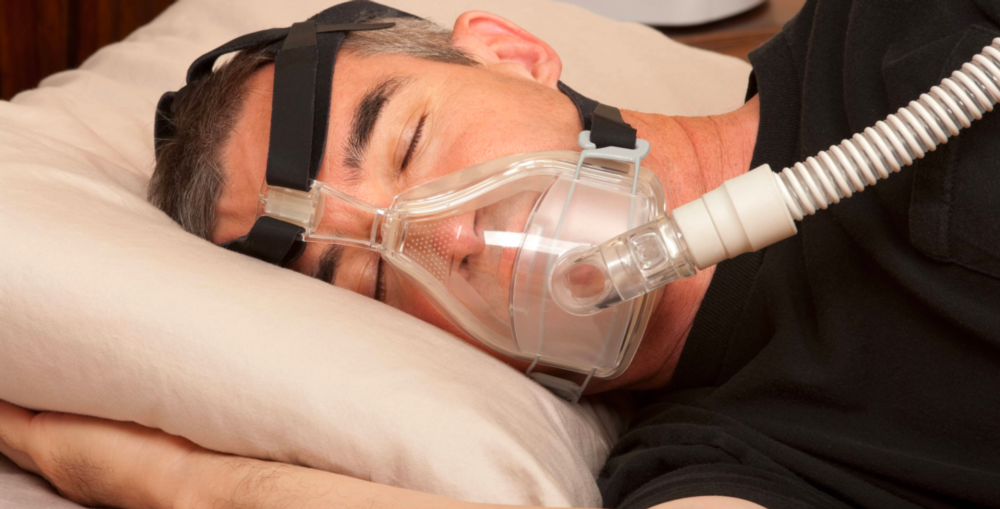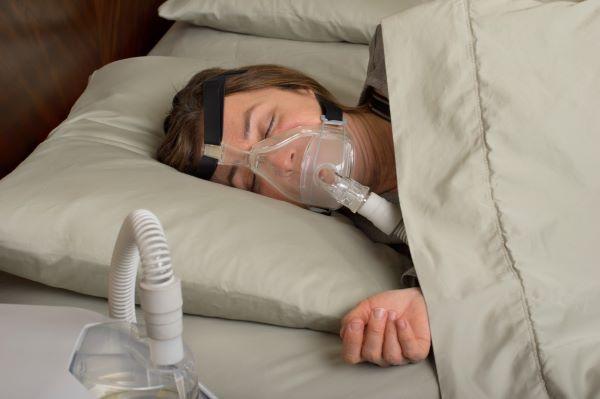Sleep Apnea Treatment in Irvine, CA
Sleep disorders are a common problem in the United States; sleep apnea is one such health condition affecting more than 22 million Americans, according to the National Sleep Foundation. It’s also estimated that up to 90 percent of the people who suffer from this condition are undiagnosed. Unfortunately, while people may recognize that they snore and are constantly tired throughout the day, they may not realize that these are the signs of a condition that could actually be threatening their lives.
So, if you wake up tired and irritable after sleeping all night, or if your partner complains about your snoring, you may want to consider a sleep study to determine whether sleep apnea is the cause.
What Is Obstructive Sleep Apnea?
 When a patient with obstructive sleep apnea (OSA) sleeps, their airway becomes blocked, causing them to stop breathing (the word apnea literally means “without breath”). These periods of not breathing last 10 seconds or longer and repeatedly occur throughout the night. A person with severe sleep apnea could experience hundreds of these episodes in a single night.
When a patient with obstructive sleep apnea (OSA) sleeps, their airway becomes blocked, causing them to stop breathing (the word apnea literally means “without breath”). These periods of not breathing last 10 seconds or longer and repeatedly occur throughout the night. A person with severe sleep apnea could experience hundreds of these episodes in a single night.
The signs of sleep apnea include:
- Loud snoring
- Gasping and choking noises as the body rouses itself to resume breathing
Although the patient may not remember these repeated waking episodes in the morning, they prevent the deep sleep each of us needs.
When sleep apnea is left untreated, both the patient’s quality of life and health suffer. Daytime fatigue and sleepiness have a detrimental effect on productivity at work and in personal relationships and can even pose a danger because of the risk of falling asleep while driving. Sleep apnea also leads to additional serious medical conditions, such as high blood pressure, heart disease, stroke, and depression.
What Are the Causes of OSA?
Your nerves, muscles, and other parts of your body interact in a complex manner. In some individuals, these interactions don’t work correctly, and the airway can close while they are sleeping. As soon as the brain registers that oxygen levels are dropping, a signal is sent to wake the body so that breathing can resume.






 All dentists, including
All dentists, including  Snoring can be one of the most frustrating experiences for the spouse or partner of someone who snores. Many patients share stories of being able to hear someone snoring even down a long hallway in another room. Unfortunately, when a spouse snores, often the couple splits up to sleep in two separate rooms. As you can imagine, this creates a strain on even the very best of relationships.
Snoring can be one of the most frustrating experiences for the spouse or partner of someone who snores. Many patients share stories of being able to hear someone snoring even down a long hallway in another room. Unfortunately, when a spouse snores, often the couple splits up to sleep in two separate rooms. As you can imagine, this creates a strain on even the very best of relationships.
 While we don’t know the cause of obstructive sleep apnea for every patient, certain risk factors increase your chances:
While we don’t know the cause of obstructive sleep apnea for every patient, certain risk factors increase your chances: While the cause of snoring is often not known for sure, but certain risk factors increase the chances of snoring in certain individuals.
While the cause of snoring is often not known for sure, but certain risk factors increase the chances of snoring in certain individuals. After you’ve been diagnosed with sleep apnea, your doctor may prescribe a Continuous Positive Airway Pressure (CPAP) machine to treat your symptoms. A CPAP machine keeps your airways open while you sleep by delivering continuous air through a mask. The parts of a CPAP machine include:
After you’ve been diagnosed with sleep apnea, your doctor may prescribe a Continuous Positive Airway Pressure (CPAP) machine to treat your symptoms. A CPAP machine keeps your airways open while you sleep by delivering continuous air through a mask. The parts of a CPAP machine include: